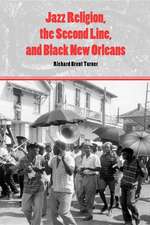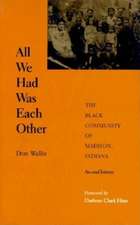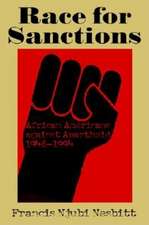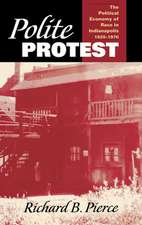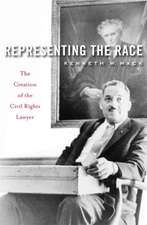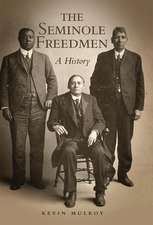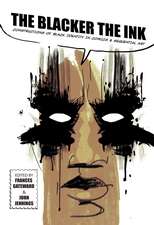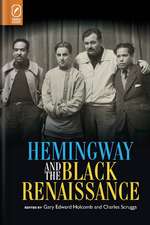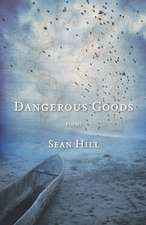Seeing Red – Federal Campaigns against Black Militancy, 1919–1925
Autor Jr. Kornweibelen Limba Engleză Paperback – 21 iul 1999
Preț: 118.34 lei
Nou
Puncte Express: 178
Preț estimativ în valută:
22.65€ • 23.40$ • 18.85£
22.65€ • 23.40$ • 18.85£
Carte tipărită la comandă
Livrare economică 25 martie-08 aprilie
Preluare comenzi: 021 569.72.76
Specificații
ISBN-13: 9780253213549
ISBN-10: 0253213541
Pagini: 248
Dimensiuni: 155 x 234 x 16 mm
Greutate: 0.36 kg
Editura: MH – Indiana University Press
ISBN-10: 0253213541
Pagini: 248
Dimensiuni: 155 x 234 x 16 mm
Greutate: 0.36 kg
Editura: MH – Indiana University Press
Recenzii
[Kornweibel] is the pre-eminent expert on the large-scale federal effort to monitor, control, and undermine black protest from the early post-war years to the mid-twenties. His book, tightly written, carefully documented, and at times passionately argued, bares the sordid story of government efforts to circumscribe and ultimately crush black dissent and protest." --Left History "Read Kornweibel's important book--and fret over the American Government's timeless compulsion to wield extralegal procedures against the unpopular and dispossessed." --The San Diego Union-Times "It should enlighten a broad audience on a period and a type of racial and political suppression less well known than those of later decades. . . . Kornweibel's matter-of-fact treatment avoids rancour, allows the charged events to speak for themselves, showing how 'the political agenda of many white Americans--white supremacy--became the security agenda of powerful arms of the national government.'" --Kirkus Reviews For several years after World War I, any African Americans who spoke out forcefully for their race--editors, union organisers, civil rights advocates, political activists, and Pan-Africanists--were likely to be investigated by a network of federal intelligence agencies. A young J. Edgar Hoover of the Bureau of Investigation (later the FBI) spearheaded the effort to discredit black activists and their demands for civil rights as communist-inspired and a threat to national security, a real Red Scare. For this gripping account of a neglected, shameful chapter of American political intelligence, Theodore Kornweibel has uncovered much new material, including the identities of black informers and agent provocateurs.[Kornweibel's] book is based almost entirely on extensive primary research in numerous archives and in difficult-to-decipher microfilm. Others may build on his work in the future, but I am certain that no one will duplicate his research. . . . ["Seeing Red" is] a significant contribution both to African American history and to the history of intelligence-[gathering]."--Susan Rosenfeld, former Chief Historian of the FBI "Kornweibel is an adept storyteller who admits he is drawn to the role of the historian-as-detective. . . . What emerges is a fascinating tale of secret federal agents, many of them blacks, who were willing to take advantage of the colour of their skin to spy upon others of their race. And it is a tale of sometimes desperate and frequently angry government officials, including J. Edgar Hoover, who were willing to go to great lengths to try to stop what they perceived as threats to continued white supremacy."--Patrick S. Washburn, Journalism History"
Textul de pe ultima copertă
""Seeing Red"" is a gripping, painstakingly documented account of a neglected chapter in the history of American political intelligence. From 1918 into the early 1920s, any African Americans who spoke out forcefully for their race -- editors, union organizers, civil rights advocates, radical political activists, and Pan-Africanists -- were likely to be investigated by a network of federal intelligence agencies. The ""crime"" that justified such surveillance was almost always the ideas they expressed. Agents of the federal government watched them, tapped their phones, rifled their offices, opened their mail, infiltrated their organizations, intimidated their audiences, and caused them to suffer the prospect of prosecutions, all because these agents disapproved of their beliefs. A young J. Edgar Hoover was convinced that black militancy -- including the demand for civil rights -- was communist-inspired and a threat to both national security and white hegemony, views that would remain part of the FBI's gospel well into the 1970s.
Descriere
A painstakingly documented account in the history of American political intelligence





